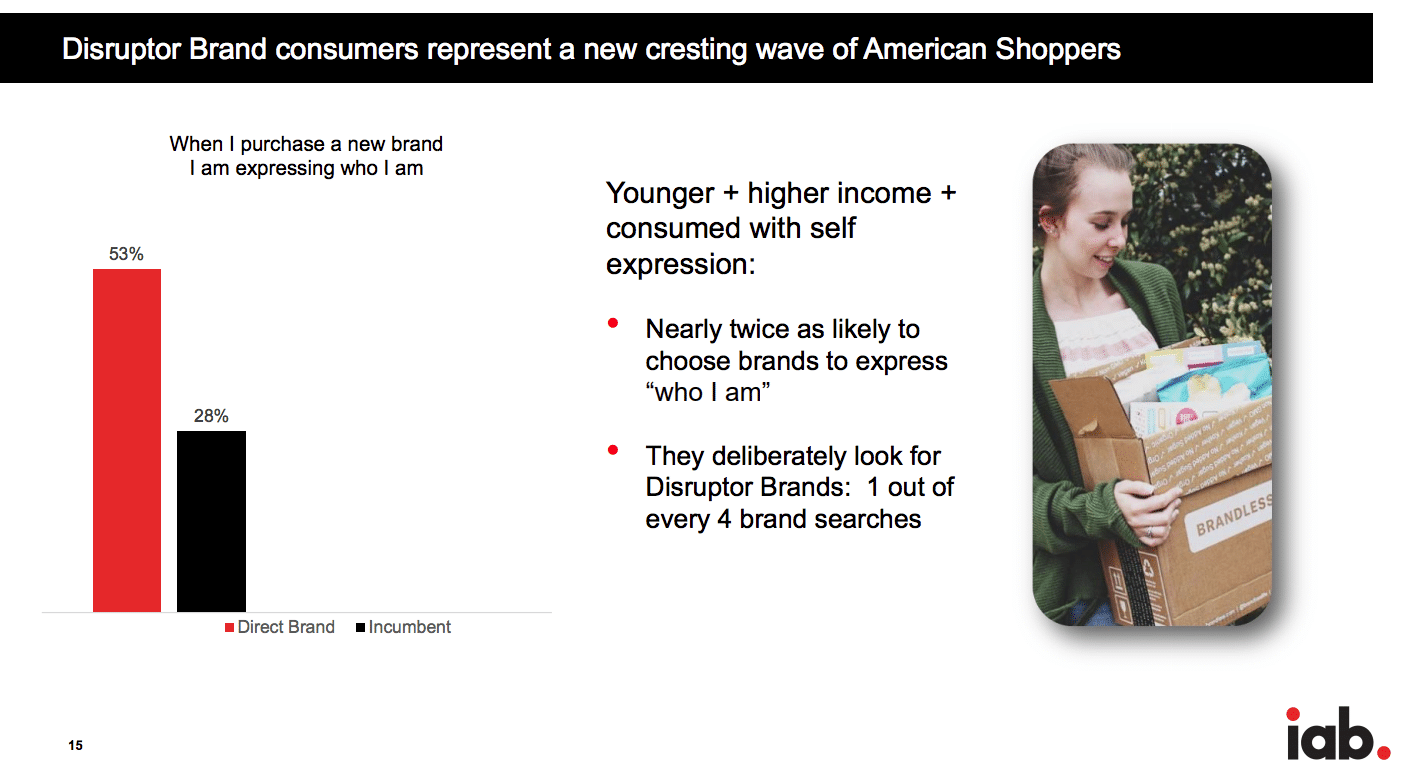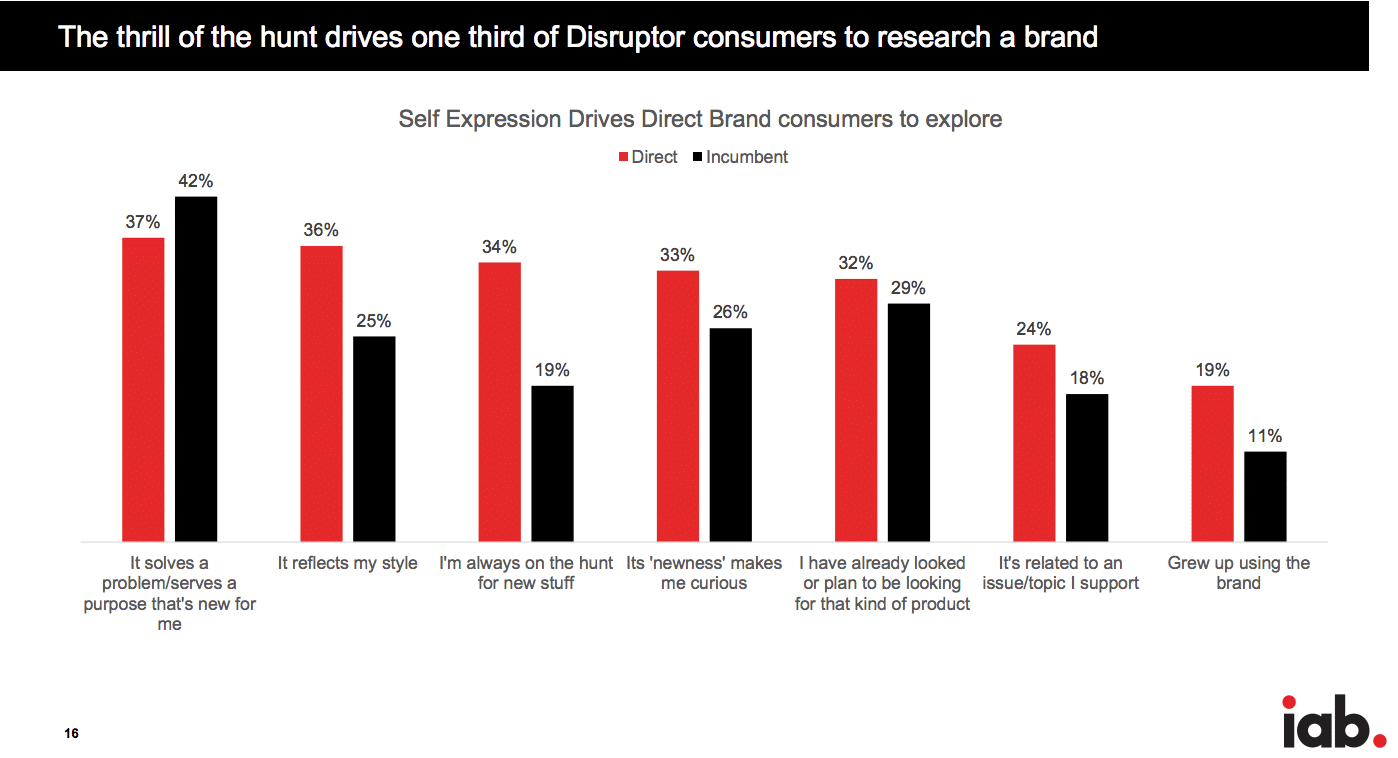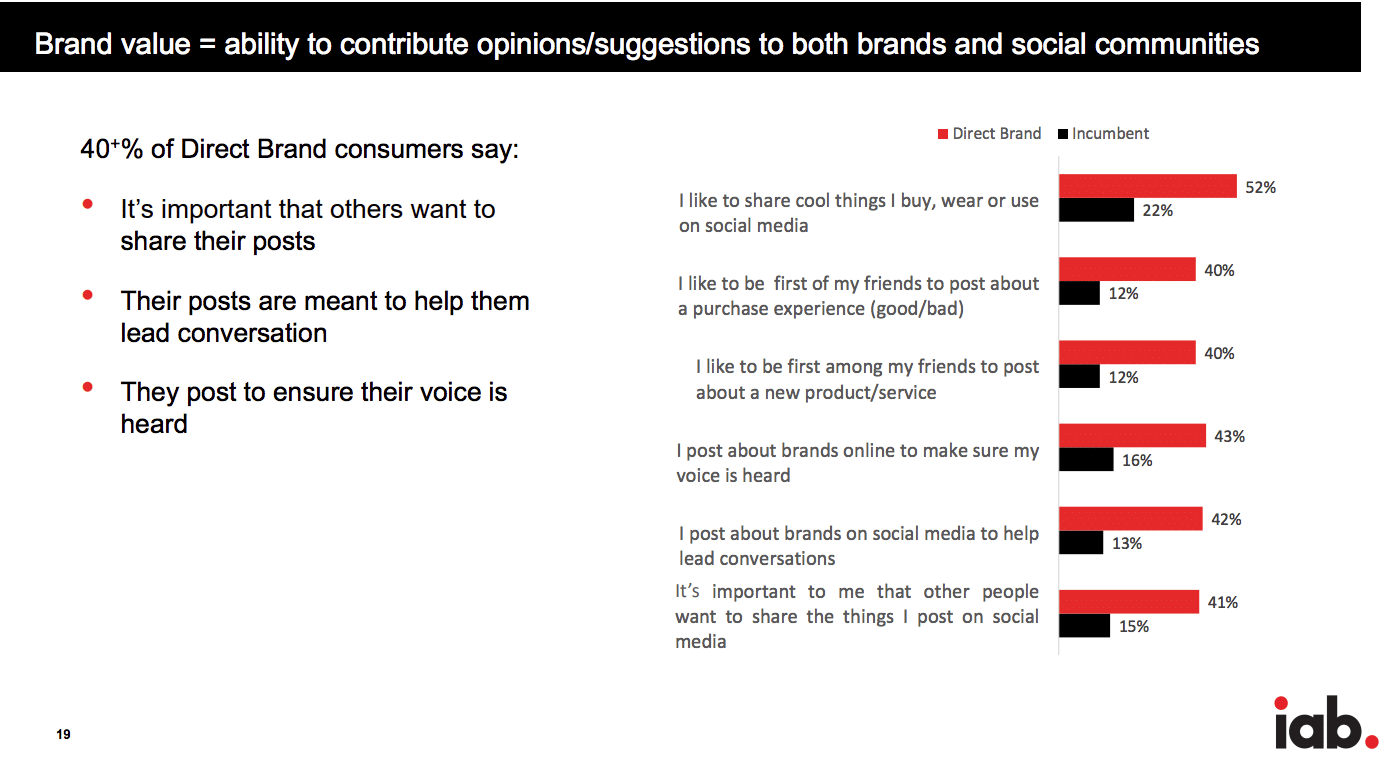As physical stores continue their struggle to compete in a digital world, new research shows that today’s shoppers are increasingly more likely to bypass traditional retailers altogether. A new report from digital media and marketing trade association IAB shows that shoppers of “disruptor” (or direct) brands—those that are predominantly sold online, and marketed directly to consumers—comprise 48 percent of all U.S. consumers.
They are indeed younger than “incumbent brand-only” (or indirect) shoppers—those who prefer traditional brands predominantly sold in retail stores—with 84 percent of disruptors being under 54 years old, and likelier to have a household income of more than $75,000. In addition, direct-to-consumer (DTC) buyers use their favorite brands as vehicles for self-promotion, with twice as many compared to incumbent brand-only shoppers saying that they choose brands to express “who I am.”
A key revelation of the report, Disrupting Brand Preference, is that one in every three DTC brand shoppers are part of a new audience group identified by the study as “Super Influencers,” who deliberately take time and effort to re-post and/or create brand-centric content to increase their own influence. The research makes clear that they are not sharing this content randomly—they are strategic and driven.
“Unlike many traditional brands, direct brands and those disrupting the disruptors, have embraced consumers and built community. Today’s consumer expects access and input into the companies they support,” said Randall Rothenberg, CEO at IAB, in a news release. “This deeper relationship not only shows up in loyalty, but actually perpetuates two-way value for both consumer and brand—in the creation of self-as-a-brand and building brand awareness through influence.”
Other key takeaways from the study include:
- DTC buyers find brand value in their ability to contribute ideas and feedback to brands and gain heightened visibility through their sizable communities
- The “Facebook family” remains #1 for sharing brand attitudes—particularly by older, incumbent brand-only shoppers
- Disruptor brands build consumer loyalty—as well as lifetime value—through cross-channel interaction
- Search, shopping, and social media sites together are nearly equal to traditional TV for brand discovery
- Influencers are the “advertising” of the modern consumer economy, and wield their greatest power during initial purchase consideration and further down the purchase funnel
- Disruptor consumers expect 24/7 omnichannel access
“There is a tendency to think that the online social activities of younger consumers are incidental [and] frivolous. But they are not,” said Sue Hogan, senior vice president of research and measurement at IAB, in the release. “The differences between disruptor brand consumers and incumbent-only shoppers are stark. For disruptor brand consumers, social behaviors are calculated and deliberate, feeding their need for self-expression.”
Download the complete findings here.
To produce this report, IAB partnered with Cassandra and conducted a 20-minute online survey among a nationally represented sample of 3,000+ consumers, fielded in May 2019. Disruptor brand consumers are differentiated from incumbent brand-only shoppers by stating that disruptor brands are predominantly sold online, marketed directly to consumers and provided a list of 32 examples across three categories. Incumbent brands were identified as “traditional” brands predominantly sold in retail stores, and we provided a list of brands across four categories. Incumbent brand-only consumers answered that they have not purchased any of the direct brands listed, or brands sold predominantly online like those examples, in the past.












